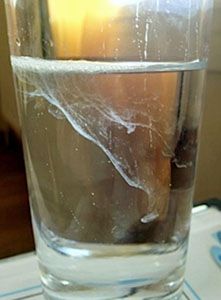@pittybitty
Need body measures and activity level
Latest posts made by LucH
-
RE: Can’t Seem to Lose Weightposted in Not Medical Advice
-
RE: When is high LDL cholesterol not dangerous?posted in Bioenergetics Discussion
@GreekDemiGod said in When is high LDL cholesterol not dangerous?:
please consider the case of familial hypercholesterolemia. it seems that very elevated levels of LDL (over 300-400) are indeed dangerous.
Hi
See the interview of Chris Masterjohn by Chris Kresser on the first link
Chris Masterjohn interviewed by Chris Kresser. Transcript of a video. Part I
https://chriskresser.com/the-healthy-skeptic-podcast-episode-11/
Comment1 :
No need to read if you don't suffer from gene defect or leptin insensibility (inducing overweight).
No need to read if you already master the fake news from the cholesterol hypothesis (Ancel key) and the lipid hypothesis (induced by corn and soy oils).
OxLDL is the problem not LDL.
Interesting however if you want to "realize" that your health-practitioner is going to measure lipoproteins in the blood, not the kind, the amount and the state of your cholesterol.
I cite: "So the numbers that you’re getting are the amount of cholesterol that is contained within each lipoprotein. But the lipoprotein itself is not cholesterol; it’s basically a carrier or transporter."
Excerpt 1:
what happens in the lipoprotein particle in order to cause atherosclerosis is the polyunsaturated fatty acids in the membrane of the lipoprotein particle are oxidized, and this basically means molecular degeneration, the molecules are falling apart. And once they oxidize they become toxic and in order to protect the blood vessels from these toxic degenerated lipids, the immune system comes along and forms an atherosclerotic plaque. That’s basically a protective mechanism but over time if you get accumulation of these toxic lipids you get inflammation, other sources of oxidative stress, these plaques fall apart causes a clot and this is what ultimately leads to a clot in the blood and then a heart attack.
Excerpt 2:
So once we realize that it’s about the degeneration of these lipids, then we can start to understand what are the metabolic factors that effect the degeneration of lipids, and how do we move beyond our understanding of the amount of cholesterol in the blood to how do we protect these lipoproteins from degeneration.
Excerpt 3:
So what we really wanna understand about fats is that saturated and monounsaturated fat are the ones that are fairly stable and therefore they’re protective, and polyunsaturated fats are the risky ones because they’re so delicate.
Excerpt 4:
LDL receptor activity
The main way the liver regulates blood cholesterol levels is by expressing the LDL receptor making bile acids, and excreting those bile acids into the intestines. (...) The LDL receptor is going to respond to the needs of the body as well as the needs of that cell. Now the needs of the body are primarily communicated by thyroid hormone. And above thyroid hormone we seem to have leptin. (...) I know there’s things that control leptin, but in terms of communicating this abundance signal leptin is like the CEO of a company or the commander in chief of the armed forces. Thyroid hormone is like a general, so thyroid hormone is under the hierarchy of leptin but it’s the main signal that’s communicating this fact that times are abundant, it’s time to ramp up our energy, our virility, our fertility, time to reproduce and do all of these great things.
(...)
[When there is a problem], that signal is not getting where it needs to go there’s miscommunication in the body. I think that’s a major role in LDL receptor activity. (...)
Excerpt 5:
About hypercholesterolemia
There’s no totally safe, totally effective way to normalize LDL receptor activity in these folks. So what we can do is try to improve the things that we can most impact, and that’s the oxidation of the LDL particle to some degree, but to an even larger degree it’s preventing the inflammation and pro-clotting environment that comes downstream from the formation of the atherosclerotic legion. (...)
When I say antioxidants I do not mean something specific like blueberries. I mean the wide spectrum of antioxidants that are found in fresh, whole animal and plant foods. (...)
Source:
Chris Masterjohn on cholesterol, as possibly cause of heart disease, and the degenerative lipid hypothesis. 2015
Google search with:
Chris Masterjohn on cholesterol and interviewed by Chris Kresser and Transcript of a video. Part I -
RE: Manuka honey?posted in Products
@eduardo-crispino said in Manuka honey?:
opinions?
Interesting but very expensive and not so tasteful. No need if not to apply on a scare that doesn't cicatrize well or for another specific purpose.
-
RE: War Between the Gut and Metabolismposted in Not Medical Advice
@RandomUser said in War Between the Gut and Metabolism:
After a while I get a super white tongue, brain fog, weird moods as well.
Hi,
Need to do the test for candida albicans. It takes control on your brain and stomach to manage what you'd eat. Not enough variety.
Make this test: Spit a lot in a mineral glass water (or with not too much Ca).

-
RE: Hair gelposted in The Junkyard
@eduardo-crispino said in Hair gel:
what oil
I use jojoba because it penetrate well and doesn't smell much. Can get it from 100 ml or 10 ml containers (bottle). From aroma-zone (France).
-
RE: Hair gelposted in The Junkyard
Hi,
I make my own gel (rather a soft gel) with aloe vera and "organic silicium" (G5).
To feed my hair, not as a gel. Fine.
1/3 water or flowered water (lavendula)
1/3 aloe
1/3 G5
30 ml oil
1 tsp solidifier
NB: Need to learn how to make a gel before testing.
Or there is a G5 gel but .why pay for a gel when I can make it (less expensive too). -
RE: Sativa marijuana is peatyposted in Bioenergetics Discussion
@eduardo-crispino said in Sativa marijuana is peaty:
there are marijuana strains from the tropical regions that grow differently and the effect is mostly mental. some have very little come down or tired-ness if any, and are more akin to a cup of coffee than a narcotic effect.
If you are conscious of this collateral effect ...
Marijuana THC alters brain synapses
There are more than 70 varieties of Cannabis sativa, of which the primary psychoactive component is THC (Δ9-tetrahydrocannabinol), at more or less high level. Using marijuana induces synaptic changes, when repeating the practice (e.g. usual smoking during the weekend).
*) Effects of Marijuana Use on Brain Structure and Function
THC appears to block synaptic plasticity and neurogenesis, particularly in hippocampal regions, which can have an effect on brain volume (Mato et al., 2004). THC has also been shown to interfere with mesolimbic dopamine pathway functioning (Bossong et al., 2008; Kolb, Gorny, Limebeer, & Parker, 2006).
Int Rev Neurobiol. 2016 Jul 20;129:33–65. doi: 10.1016/bs.irn.2016.06.004
Varieties of marijuana (Cannabis sativa) contain over 70 identified cannabinoids, of which the primary psychoactive component is THC (Δ9-tetrahydrocannabinol). The potential effects of THC on brain functioning are equally broad. THC exerts its effects on CB1 receptors are distributed broadly throughout the brain with particular areas of concentration in prefrontal, cerebellar, temporal, and hippocampal regions (Burns et al., 2007; Glass, Faull, & Dragunow, 1997; cf. Fig. 1B).
CB1 receptors = cannabinoid receptors type 1.
*) Synaptic changes induced by cannabinoid drugs and cannabis use disorder
In some regular cannabis users, CWS occurs after the cessation of cannabis use.
CWS = cannabis withdrawal syndrome.
https://doi.org/10.1016/j.nbd.2022.105670 -
RE: Zero fiber for gut irritation?posted in Not Medical Advice
"Zero fiber for gut irritation?"
=> I won't do that.
Need to know the difference between soluble fiber and insoluble fiber.
At the beginning it will be easier with soup and smoothie.
A combined approach is required:
How is the mucus of the stomach?
Do you digest well? Dysbiosis? Energy level?
Do you manage well with association in food?
How is the stress level?
And so on.
NB: Phytotherapy will be probably required to calm down et help support some kind of food. -
RE: Covid long preventionposted in The Junkyard
Simplified version of the description for immune failing: pathophysiology key-points. Hypothetical disease model. (from Eduardo).
Only a partial analysis, just to avoid losing energy because the link is not fundamentally targeting SARS-CoV pathology but well how to remain in the low-symptom category when suffering from a compromised health issue. Not very readable …
Key points- Biofilms are protective and are under control of some bacterial fila to avoid inappropriate expansion.
- If the microbiome has been compromised by a lack of protective species, pathogenic species could / are going to take the lead.
=> An ongoing slippery slope of microbiome dysbiosis is created by events which allow the surface area expansion of pathogenic biofilms. - These biofilms are degraded by helpful microorganisms, such as commensal various bacteria (Lactobacillus spp., Bifidobacterium spp., Bacillus spp. and other species), stomach acid, dietary intakes of biofilm degrading compounds and lifestyle choices.
- Low populations of bifidobacterium are routinely found in chronic disease.
- The protective microorganisms metabolize acetaldehyde into acetate, degrade biofilms and inhibit pathogenic species.
- Antibiotics have broadly deleterious effects on microbiome diversity and abundance.
- Acetaldehyde is well-known in chronic alcoholism for causing T-cell exhaustion, inhibiting glycolysis, decreasing NAD+/elevating NADH, inhibiting methylation, inhibiting collagen synthesis, dysregulating thiamine pyrophosphate metabolism and having a higher affinity for various aldehyde dehydrogenase (ALDH) isoenzymes required for eg. Neuro-transmitter degradation, histamine degradation and many other pathways.
Gliotoxin, other mycotoxins and endotoxins are also relevant to this cascade. - Immune system dysregulation caused by malnutrition, low NK cell counts, medications that alter Interferon signaling bias / cascade regulation, antibiotics, bio-toxins, IFN-alpha promoting antigen dominance (eg. SARS-CoV-2 spike protein / infection, influenza, reactivated herpesviruses, isocitrate lyase expressing microorganisms, lipopolysaccharides, medical interventions which provide antigens for immune imprinting), and chronic stress (as elevated cortisol, dysregulation of cytokines) can each provide a window of opportunity for unimpeded biofilm growth, increased endo/mycotoxin production and net acetaldehyde increase.
- Low grade inflammation: An inflammatory cascade is going to overcome and to create havoc.
- Description of the hormone chaos.
More details on this link from Eduardo (scroll till the bottom)
https://bornfree.life/2024/
